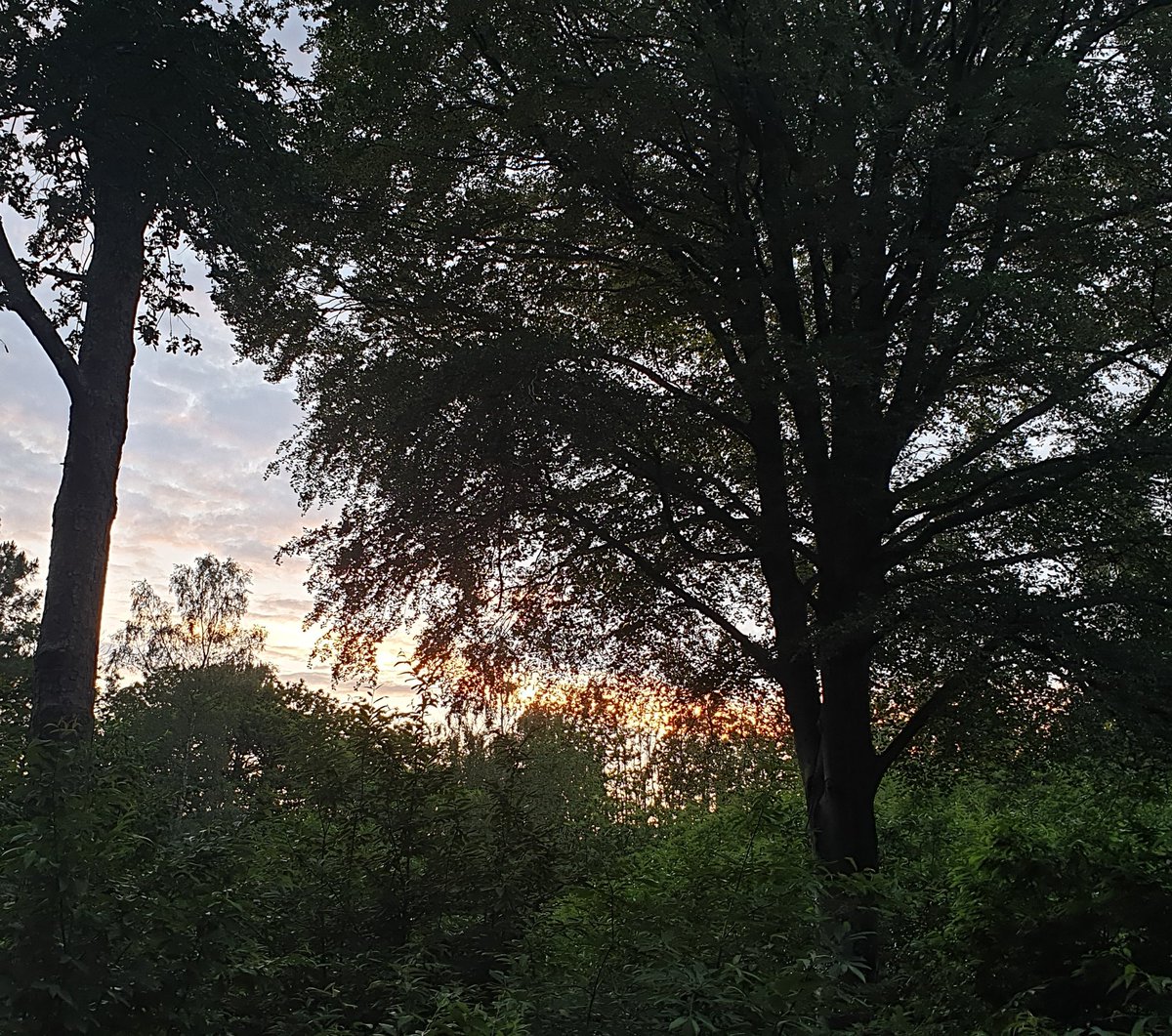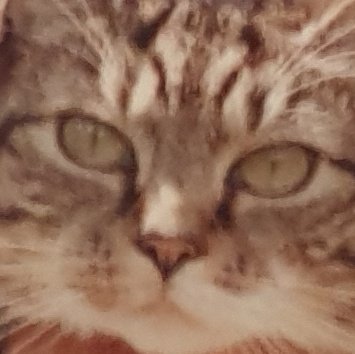Time for another #TetZoocryptomegathread, again a #LochNessMonster one, again on one of my favourite #Nessie photos: the Peter O’Connor photo of May 27th, 1960. Follow this thread as we take a VERY DETAILED look at the story behind this case… 



The O’Connor photo – a single black and white image – is one of the ‘best’ #Nessie images, by which I mean that it shows an object which looks something like an animal, and shows it at close range and at reasonable detail. #cryptozoology #monsters
The photo was taken in darkness, from close to shore, and (supposedly...) as the camera was held less than 1 metre above the water surface. The flash illuminates the scene, and is bouncing off wavelets as well as what looks like the body of a large animal… 

This ‘animal’ is amorphous; it basically looks like a long, convex mass perhaps a couple of metres long. It’s shaped approximately like the upturned hull of a boat, and if you know lake monster history…
… you’ll recognise this description as a very common one for these creatures. ‘Giant fish’ and ‘horse-headed long-neck’ are the two other classic ‘types’ of lake monster... 

A small, slender head and neck (with no obvious head/neck junction or change of angle at the junction) projects out of the water a short distance ahead of the body… 

The animal is directed away from the photographer as if it’s unaware of their presence. But that’s not what Peter O’Connor stated in his accompanying account. Ah yes, his account. What did he say? Well…
O’Connor was at #LochNess, specifically to look for and find #Nessie. A very detailed account of what happened was published in the first (1961) edition of Tim Dinsdale’s book Loch Ness Monster... 

Dinsdale was an indefatigable Loch Ness promoter and believer, keen to push the idea that Nessie’s existence was a true fact, and that witnesses were good, honest people… 



We’ll be hearing more about Dinsdale in other megathread; meanwhile, here’s a book review I wrote which talks about him a lot… tetzoo.com/blog/2019/8/24… ... #Nessie #LochNessMonster #LochNess
Anyway, Dinsdale’s 1961 book devotes SIX pages to O’Connor’s account; it both quotes a letter AND includes interview info Dinsdale got direct from O’Connor…
O’Connor woke up early – between 6am/6.30 – and went to answer the call of nature. Walking 100 yards from camp, he was lucky enough to see #Nessie gliding through the water and around a headland…
Camera in hand – a Kodak Brownie Flash 20 like that shown here – (did he take this with him when he went to relieve himself? Yes, apparently so) he tiptoed quietly up to the monster, literally wading silently through the water up to the waistline... 

.... (he said that he could do this because of his training as a Royal Marine Commando), and got the one good photo…
He described how he knew that the monster was aware of him, and he was fearful for a moment that it might be heading straight for him…
He then turned back to camp, shouted at his expedition companion Freddy Fulcher (yeah… real name, apparently) and took a 2nd photo, this time without flash. This didn’t reveal anything but darkness. Fulcher did apparently get a quick glimpse of something black, submerging…
For an animal which is supposedly incredibly cryptic, secretive and sensitive to human disturbance, #Nessie sure let its guard down on this occasion, shame on you Nessie. I’m not sure anyone else claims to have approached Nessie this closely: within 25 yards, apparently…
He said it was greyish-black, about 16 ft long (4.8m) at the waterline, that 2-3 ft of neck was visible, and that the head was about 10 inches long. Eyes weren’t visible, but he reckoned that they were there, just tightly closed... 

Furthermore, #Nessie had “sheep-like features” and strong neck muscles which “kept rippling in it, reminding me of a panther’s leg when pacing in a cage”. Oh, I see...
Dinsdale ended his section on O’Connor’s account by basically saying that he had no doubts about the authenticity of the photo, and regarded O’Connor as “perfectly straight-forward person” whose account he believed…
Now, I don’t own _all_ editions of Dinsdale’s Loch Ness Monster book, but I do own the third edition (1976; shown here). Of interest is that all mentions of Mr O’Connor are absent from the third edition, as is O’Connor’s photo. We’ll come back to this… 

Also worth stating is that O’Connor apparently only allowed Dinsdale use of the photo IF Dinsdale published O’Connor’s suggested technical name for #Nessie – Nessiesaurus o’connori – within his book…
Dinsdale did this, but only in the acknowledgments section, not in the main text. Clever, since it was then tucked away and mostly ignored and missed… 

Despite apparently taking the photo on May 27th, O’Connor waited until June 16th to announce events to the press. This was 3 days after Dinsdale’s sensational #Nessie film – yes, a film of Nessie (a story I’ll cover in another #TetZoocryptomegathread) – went public…
Ronald Binns (in The Loch Ness Mystery Solved) said that this wasn’t a coincidence, and that O’Connor was deliberately riding the wave of Nessie publicity present at the time…
Indeed, it’s worth saying that O’Connor’s photo was obtained at a time when belief in the monster’s existence was taken more seriously, and discussed more widely, than is the case today...
A good number of enthusiasts, writers, journalists and even scientists were keen to push any ostensible new evidence for #Nessie – way more than today – and a photo like O’Connor’s was destined for massive national exposure.
Anyone who obtained a ‘good’ photo was essentially guaranteed their 15 minutes of fame back in 1960… all of which might mean that the hunt for #Nessie was very appealing if you were a narcissist.
And so the O’Connor photo appeared on the front page of the Weekly Scotsman on June 16th, 1960, and then in several other newspapers too… #LochNessMonster #Nessie #monsters #cryptozoology 





What do we actually know about Mr Peter O’Connor? As is so often the case with monster witnesses (this is important, try to remember it), O’Connor wasn’t just some random dude who saw a mystery animal and got lucky with his camera… 

At the time he was 26, had worked as a fireman (‘rock climber’ and ‘underwater swimmer’ were among his other list of accolades), and had travelled to Scotland from Gateshead, Tyne and Wear (north-east England).
He was fairly committed to proving Nessie’s appearance AND had made a bunch of weird claims about how he was going to do it…
For starters, the 1st edition of Dinsdale’s Loch Ness Monster reveals that O’Connor (of “Gateshead, Durham. Member of Northern Naturalist Organization”) saw Nessie just a few days prior – on May 24th, 1960 – to the taking of his photo, this time from the lawn of Foyers Hotel...
This monster, seen at around 4.10pm in bright sunlight, was huge ... bigger than the 28 ft which O’Connor was apparently expecting (wha??) ... and “could very easily have been mistaken for an upturned boat”. Ah, try to remember this point of similarity, made by O’Connor himself.
O’Connor’s plans – announced to the Sunday Express in September 1959 – were to lead an expedition of 60 people to Loch Ness to find #Nessie, and to dispatch a specimen (as in: kill one) via the application of machine guns, harpoon guns, spearguns, a machete and a bomb. 

Faced with the view that murderous rampages directed toward the #LochNessMonster were not to be tolerated, O’Connor reported that “if we are lucky we should only have one burst of firing”…
As mentioned above, O’Connor wanted to have Nessie named Nessiesaurus o’connori. He might not have known that the International Commission on Zoological Nomenclature forbids you from naming organisms after yourself...
... in addition, grammar like the ‘ in O’Connor is not permitted, but whatever...
Naturalist, author, artist and conservationist Peter Scott, who was much involved in the #Nessie saga during the 60s and 70s, argued immediately (as in, June 1960) that O’Connor’s photo was a fake – he suggested it involved details painted onto a photograph – and told Dinsdale… 

…. that “you do yourself an injustice by so easily accepting this kind of thing as evidence” ... which is wise & damning, if not ironic given Scott’s involvement in the flipper photo saga of the 70s (go here at #TetZoo for the story on those: tetzoo.com/blog/2020/8/17…)... #Nessie
I’ll repeat here something I’ve said a few times before: there’s a popular belief in #cryptozoology circles that you should listen to a person’s anecdote or eyewitness encounter and...
.... deliberately ignore information on that person’s known biases, background history, state of mind, mental health or previous weird encounters or observations…
I strongly and fundamentally disagree with this take. Humans are not consistently objective across the board. Some people are hilariously bad or terrible observers, some have a track record of lying or exaggerating, some are biased and seeking to prove things...
... some are total fantasists who live in a world where ghosts, monsters, aliens and more are assumed to be real…
... And even the most perfect, most brilliant, most unencumbered person can still be prone to making all sorts of mistakes due to state of mind, their own expectations and biases, and so on...
It would be wrong to say that a person’s approach to a subject – like the search for the #LochNessMonster – is irrelevant to what they claim to have seen. It’s completely and wholly relevant.
So when someone talks about being an ex-military ninja assassin who seeks to kill #Nessie and have it named after themselves…. look, they’re very likely not impartial and may even be full of shit.
As usual with #Nessie photos, a list of researchers have interpreted the object in the O’Connor photo as an animal, and as an unknown species as that.
Oops -- AT that. We saw earlier that Tim Dinsdale – THE champion #Nessie advocate across the 1960s, 70s and 80s – regarded the photo as genuine, and as consistent with the creature he thought he’d seen (and filmed) in 1960… 


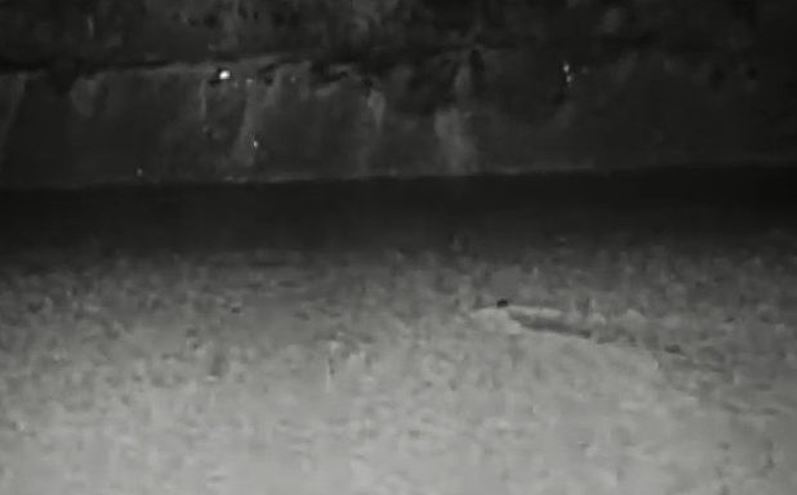
Dinsdale even praised the photo during his June 1960 TV appearance. As mentioned earlier, Dinsdale removed mention of the case from later editions of his book. But...
... he still referred to it, favourably, in the 1976 edition of another of his books (The Leviathans) – so appears to have still regarded it as legit… 

Another #Nessie proponent, Henry Bauer, said in his 1986 book The Enigma of Loch Ness, that Dinsdale opted to remove it because “O’Connor wanted to be left in peace” and that Dinsdale still supported the photo’s authenticity... 

Peter Costello’s 1974 In Search of Lake Monsters argued that #Nessie is a giant, long-necked seal, and O’Connor’s photo was taken by Costello as being consistent with this idea, and with other sightings… 



Costello was aware of criticism of the photo (we’ll come to that in a moment), but said that he’d rather believe in the photo than in the ivory-tower sniping of the sceptics…
The smooth body and featureless head of the creature in the O’Connor photo could also be deemed consistent with Roy Mackal’s idea that #Nessie was a giant, newt-like amphibian, though I’m not aware of any author really pushing this interpretation… 



… Mackal himself wasn’t happy with the photo and dismissed it from consideration in his 1976 #Nessie book. He was swayed by the criticism of Maurice Burton (which we’ll get to in a moment)…
On that note, have there been sceptical analyses of the photo? You bet. As expected, doubts about its authenticity were raised from the start, not just because it’s suspiciously ‘good’ relative to the other evidence for #Nessie, but also because there are some peculiar aspects…
For one thing, the timing doesn’t make sense. The photo is in complete darkness; there’s no sunlight on the horizon, and it can only have been taken before sunrise...
... Which is inconsistent with O’Connor’s claim that it was taken at 6am/6.30, since sunlight would definitely be visible by this time (sunrise actually occurred about 2 hours earlier on the day in question!)...
Ok, maybe he just got the time wrong. Sure, but this isn’t a good sign when you’re supposed to be paying close attention to doing something as momentous as obtaining a close-up photo of the #LochNessMonster. Or, at least, it is if you want people to take your claim seriously...
Dinsdale included a long explanation from O’Connor on how the photo just _looks_ dark due to the camera settings. But, no... this doesn’t work. You absolutely should see light in the background of the photo if it was taken when O’Connor said it was...
A second thing concerns the way the light from the camera flash illuminates the scene. O’Connor said he waded out and kept the camera at eye level (so, about 2ft above water level, since he was standing waist-deep in the water)…
… but this isn’t true, since the flash illuminates the scene from above, and is specifically directed downwards (but at an angle)... 

What this means is that the photo was taken from about 4 metres up in the air. This fact doesn’t ‘prove’ anything (since it could be argued that O’Connor opted to photograph the monster this way), other than that – again – his description of events wasn’t accurate or truthful...
A third suspicious point concerns the look of the monster itself. If this really is an animal, what sort of animal could it be, and why does it look this way? 



It looks weird. Binns likened it to a loaf of bread, in jest of course. Paul Harrison (an… interesting character who’se recently been in the news for matters unrelated to his #Nessie writings) noted that it looks like a rock… 

It would have to be an amphibian, reptile or mammal (in view of the distinct head and neck), but a very unusual one to have a head that tiny relative to the size of the body...
#Plesiosaurs – considered by some researchers during the 1950s and 60s the best potential candidates for #Nessie’s identity – don’t have a head as proportionally small or shapeless as what’s shown in O’Connor’s photo… 

And the long-necked seal (the identity favoured for lake monsters by some researchers) isn’t meant to have had a head as tiny and shapeless as O’Connor’s Nessie either (despite Peter Costello’s happiness with the photo being consistent with his long-necked seal manifesto)...
I’ve often wondered if O’Connor deliberately modelled the look of his #Nessie on the identikit version of the monster built by Dinsdale, and showcased on TV, in newspapers and elsewhere in 1960. 



Dinsdale’s #Nessie (which was meant to be a modern-day plesiosaur, as very heavily implied in the 1st [1961] edition of his book) also had a tiny, shapeless, blunt head connected to a slender neck of similar diameter…
Then again, Dinsdale’s #Nessie was meant to be distinctly humped (with two obviously convex dorsal projections), whereas O’Connor’s beast has no humps and is just continuously convex over its dorsal surface.
It’s also possible, and perhaps likely, that O’Connor’s #Nessie – if it is a hoax (on which, read on) – was a more makeshift affair, and that he simply made do with whatever materials he had available...
... Maybe he just found a prop (a stick?) that looked about good enough for the head-neck of his photo, and that was the one he used. At this stage we don’t know.
Another suspicious point concerns movement. O’Connor described the animal as moving forward during his time of observing it, yet it looks stationary, with no wave or indication of movement in the water around it...
Actually, there _are_ concentric ripples emerging from the far left of the photo, so recent water movement was coming in from that direction. Whatever those ripples result from, they’re not in the right place to be caused by the forward movement of the monster. 



Also on movement, O’Connor also said that he saw ripples corresponding to submerged paddles: he seems to have considered the beast 4-flippered, as per Dinsdale’s neo-plesiosaur...
Did the location where O’Connor take the photo reveal any clues? We know where he took the photo (a contrast with some other famous #Nessie photos): specifically, near Foyers on the loch’s southern shore. There’s still a popular camping area there today (map from google maps)… 
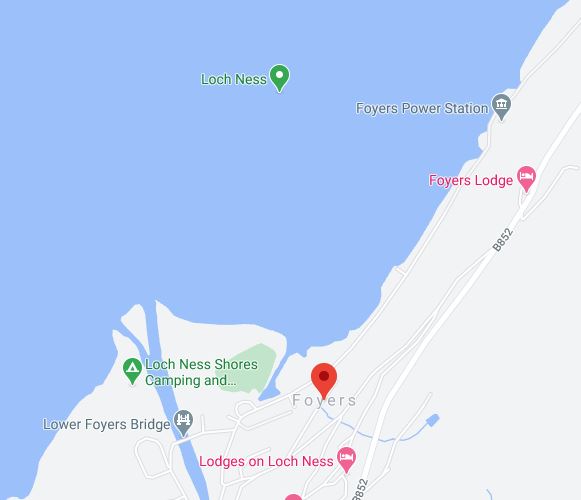
In June 1960, just 2 weeks after the photo had been taken, author and occasional #Nessie advocate and researcher Maurice Burton (author of his own Nessie book) visited the spot. In fact he was taken there by a gillie who referred – in jest? – to the spot as ‘O’Connor’s Cove’… 

Burton discovered recent evidence for a campsite (including a bivouac and the remains of a fire), and – in addition – used flash bulbs, the burnt remains of large white plastic sacks, a length of string, and a submerged ring of stones associated with more string…
Burton’s argument was that O’Connor had used the stones to weight down a large plastic bag tied with string, and he produced a photo of his own to show show it could be done. Burton’s photo doesn’t, actually, much resemble what’s in O’Connor’s, but ho hum… #Nessie #LochNess 

A stick shaped exactly like the monster head which features in the photo was said to have been later discovered at the same spot by retired journalist Angus Forbes (it was later lost when Forbes tried to make his own reconstruction of O’Connor’s #Nessie!)…
For years I thought that this ‘solved’ the problem of O’Connor’s photo: it was an inflated plastic bag, rigged to look like a monster’s body. It would explain the amorphous, plastic bag-like look of the object.
The problem is that the spot located by Burton is a popular camping place, and the junk which Burton found might just have been crap left behind by a couple of campers who didn’t care about the environment (god knows there are enough of them around, today as much as in 1960)...
You might also wonder how a person faking a #Nessie photo would actually go about inflating a giant plastic bag while camping on the shores of Loch Ness, since this isn’t as easy as it sounds…
Inflating a bag with a foot pump or even human breath is possible, but takes a while and you’d need a very unusual bag for it to work...
... it would either have to be shaped like a giant inflatable balloon – so, with a restricted neck-like aperture – or have a valve like an beach ball or similar. Any use of gas tanks is likely out, they’re a whole world of pain and are expensive.
Also, use of gas inflation would give any bag a taut, stretched look of the sort you see with an inflated kid’s balloon or beach toy. I’m not sure that the object in O’Connor’s photo looks right for that. 

Back to Maurice Burton: of interest is that Burton wasn’t impartial with respect to the O’Connor case. He actually had an unofficial working relationship with O’Connor in 1959; we don’t know the details. Or, I don’t, anyway, and neither do other Nessie researchers I’ve spoken to.
There are rumours in the #Nessie research community that Burton actually lent O’Connor some of the equipment O’Connor used in his expedition.
If all of this is true, and if the O’Connor photo is a hoax (which I’m pretty sure it is, keep reading), it might be that Burton felt especially pressed to either check out O’Connor’s claim and see if is was legit…
… OR backtrack and distance himself from the entire adventure. By publicly outing the case as a hoax, however shodily or hastily, and yet still keeping it quiet that he worked in some capacity _with_ O’Connor...
.... Burton might therefore have been seeking to emerge from this relationship with as little dirt on him as possible.
I emphasise again that I’m very much reading between the lines here.
An interesting thing about O’Connor is that he was also a taxidermist, and by the mid-70s was telling people that he was to be known as ‘the Taxidermist of Europe’…
He had a taxidermy shop in Luton High Street and wrote two books on taxidermy, namely Fish Taxidermy in 1975 and Advanced Taxidermy in 1983… 

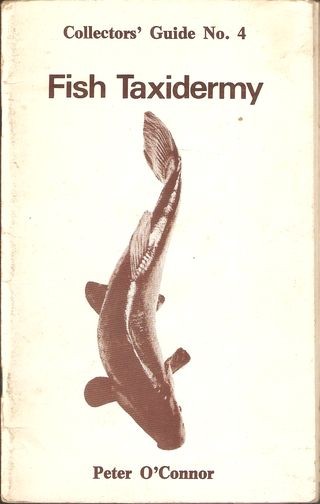

Ronald Binns – author of the highly influential sceptical analysis of 1983, The Loch Ness Mystery Solved – suggested (in his 2017 The Loch Ness Mystery Reloaded) that this might be significant, and implied that O’Connor might have used a taxiderm seal as his #Nessie. 


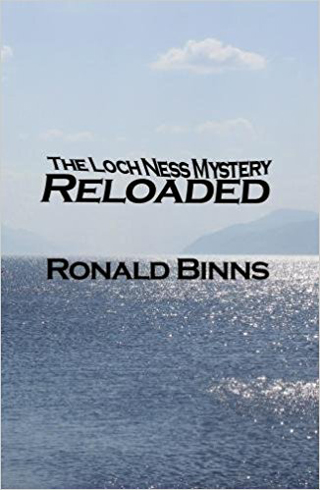
This is an interesting idea. But I don’t see ‘seal’ when I look at the photo: the texture and colour don’t look right, some details definitely contradict this possibility (read on), and I don’t know that a taxiderm model would sit in the water the way O’Connor’s #Nessie does…
Plus carting a dead seal round would be difficult and hard to keep secret (incidentally, this is a thing which has happened... a dead elephant seal from a zoo was dumped in Loch Ness… but that’s a story for another time)...
Finally, we come to the hoax explanation I like the most. It’s pretty funny if it’s true.
An important point is that … as is the case with several #Nessie photos (the 1934 Wilson photo is another example)… most reproductions of the O’Connor photo show a cropped version, where the monster’s body extends all the way to far left and continues out of frame…
There are three versions of the photo. Dinsdale’s 1961 book includes a very vertical one as well as a more landscapey one with the far left of the monster in frame; all other versions of the photo are landscapey but cropped at the left… 





Incidentally, O’Connor – who was still responding to correspondence on #Nessie as recently as 2017, and still insisting the photo was genuine – hasn’t granted permission for use of the photo to those pushing a sceptical or dismissive take on the photo, or...
... even to pro-Nessie authors of recent years – here’s the drawing which Henry Bauer had to use in 1986… 

If we look at the 1961 version from Dinsdale's 1st edition which shows the far left of the monster, we see a few details of ‘anatomy’ which are usually hidden or obscured… 



Namely, an unusual change in angle of the ‘body’s’ dorsal outline, a sharp dorsal ridge, a dark stripe that forms an upper border to the monster’s left-hand edge, and a similar dark stripe that runs parallel to the water and is close to it… 

These aren’t features of animal anatomy, nor are they features of inflated plastic bags or taxiderm seals. They show that this is a human-made object, formed of sharp edges and incorporating what look like metal points of connection or reinforcement.
Combine this information with the fact that the monster’s body has the ‘inverted hull’ shape mentioned earlier… waitaminute, could it, literally, be an inverted boat?
Here we come to an investigation of the photo produced by #LochNess investigator Dick Raynor. Dick was one of the original Loch Ness Phenomena Investigation Bureau team, beloved of #Nessie believers because of some monster sightings he had and a piece of footage he obtained... 

Over the years since the #Nessie heydays of the 1960s and 70s, however, Dick became increasingly sceptical, and today’s he’s a champion of #LochNess scepticism and critical analysis, his detailed evaluations of lake monster photos being invaluable and masterful...
Curious about the O’Connor photo, Dick got to know the members of Peter O’Connor’s family. He discovered that O’Connor used a kayak when travelling about the loch and at the spot where he took the 1960 photo…
O’Connor’s kayak turned out to be a specific model of folding kayak called a Tyne Prefect. Dick was able to examine one, and photographed it inverted, at night, and… 
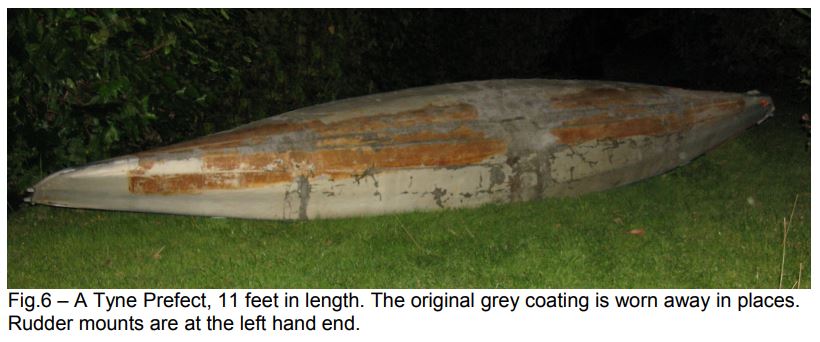
… it’s a pretty good match for the body of the monster shown in O’Connor’s photo. It also explains those unusual details at the far left of the image, described above… 


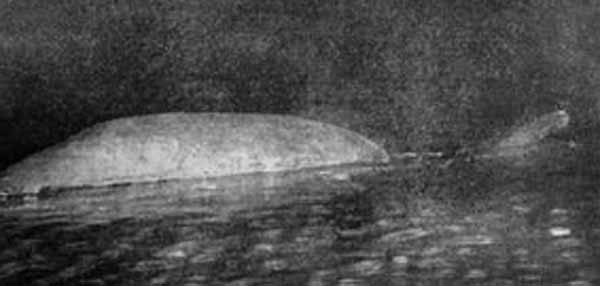
The straight ‘dorsal’ lines correspond to the kayak’s margins, and the dark strips do indeed match metallic structures; specifically, the rudder mount on the hull’s stern. 



I learnt all of this off Dick when preparing my 2017 book #HuntingMonsters and incorporated it (Dick published his own analysis, available here: academia.edu/19844058/A_Stu…)...
.... and I think it does explain what O’Connor photographed: an inverted kayak, with a head-shaped stick planted in the water ahead of its bow...
Like most ‘classic’ bits of alleged #Nessie evidence, the O’Connor photo has fallen by the wayside these days and nobody talks about it as supporting evidence for Nessie’s existence, nor do sceptics feel the need to drag it out and thrash it into submission as I’ve done here.
There are one or two #Nessie True Believers – yes, they’re still out there – who defend the photo as a potentially real image of the creature they want to exist, but it’s clear from the rest of their output that these individuals are living in their own special little kingdom...
... and don’t operate by the same rules as those who want to see critical thinking and appropriate scepticism applied to claims about the universe.
A main take-home, for me, about the O’Connor photo is not just that it was a hoax, but that it was a bold and brash hoax of its time, of a time quite different from today when it comes to the #LochNessMonster – a time when one could seriously claim, with a straight face....
.... to have waded out into the waters of the loch and photographed a giant unknown animal from a distance of 25 yards....
Those days are gone now. No one today, in 2020, could claim to have an experience like this, let alone photograph it. Could they? …..
As usual, the information you’ve seen summarised in this thread comes from numerous books and articles on the #LochNessMonster. The O’Connor case is summarised in my own 2017 book #HuntingMonsters (now proving hard to get hold of, but here… amazon.co.uk/gp/product/178…)…
… as well as in Steuart Campbell’s Loch Ness Monster: the Evidence, Ronald Binns’ The Loch Ness Mystery solved and other books shown here. These books are easily available, buy them if you can… 



Dick Raynor’s article analysing the O’Connor photo was also important (you can see it for yourself here: academia.edu/19844058/A_Stu…). #Nessie #LochNess #LochNessMonster #cryptozoology #monsters
I’ll state, as usual, that my plan with these #TetZoocryptomegathread things is to compile them for a book which analyses supposed monster photos, or to cover them, case by case, in a TV series. Thanks for reading, more is planned. THE END!! 

• • •
Missing some Tweet in this thread? You can try to
force a refresh




















